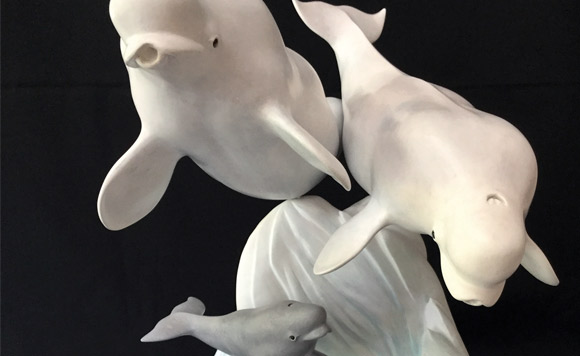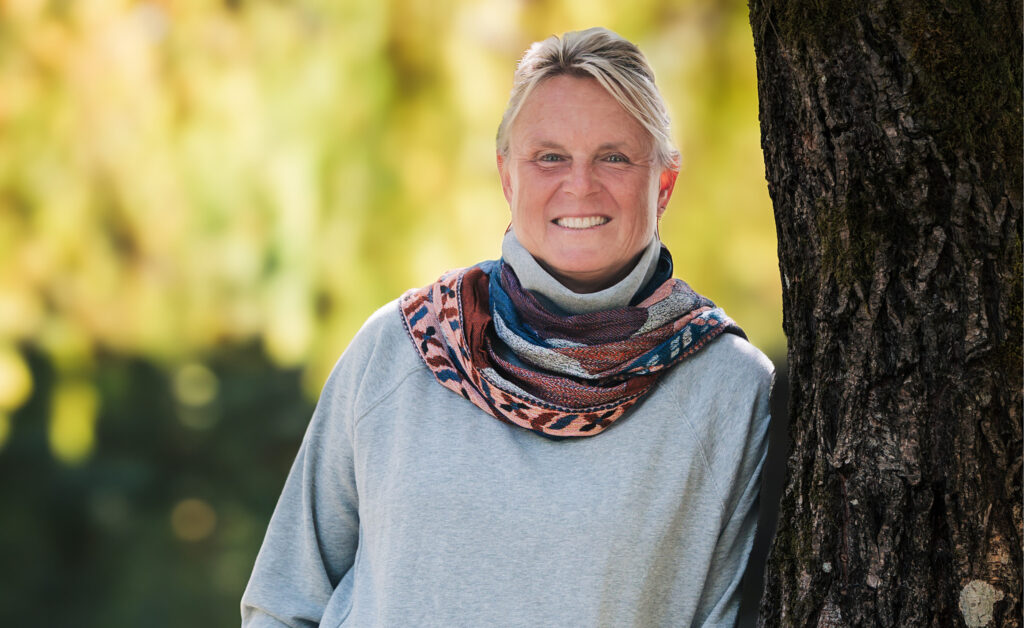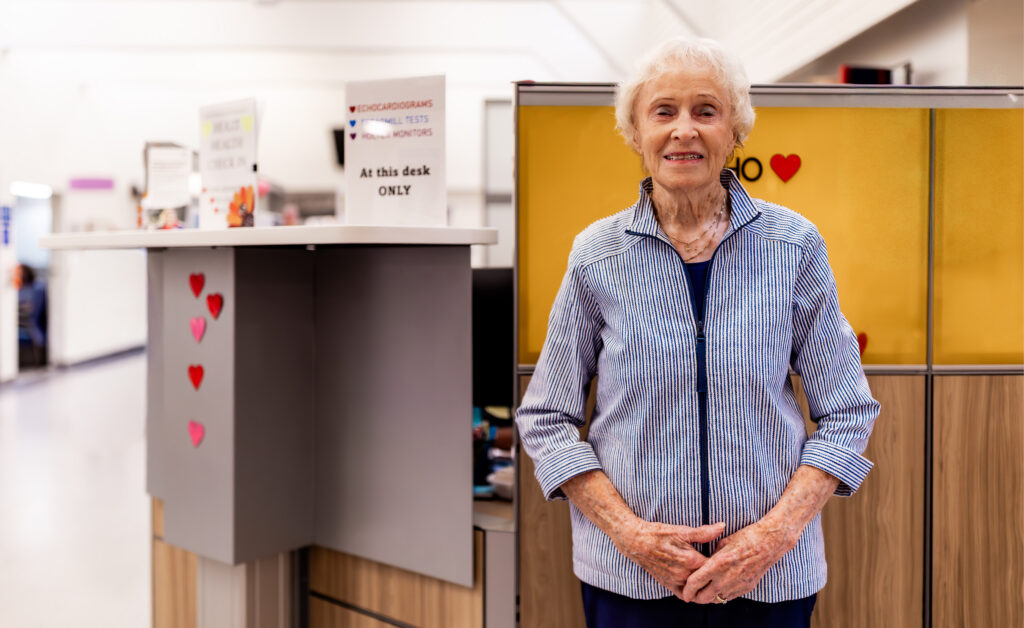by Gillian Crowley –
Visiting Betty Erb’s home is like attending an art show. Painted wood carvings of birds and sea mammals perch on every surface, wooden bowls gleam beside whimsical carved houses, and paintings hang on every wall. All of this is Betty’s work and it’s clear she loves doing it.
Betty points out a life-like Ruddy Duck with its perky upright tail: “This probably took me 500 hours to carve and paint so you know it’s a labour of love.” For her carvings, she uses an existing template or draws one herself. Once the initial carving and sanding are complete, she inserts glass eyes, wood burns the fine details, and finishes by painting feathers and other elements which bring the bird alive.
Wooden duck and goose carvings became popular over a century ago when hunters would float groups of roughly carved wood decoys on a water body to encourage flocks of birds to land. Over time these carvings became more up-scale, evolving into the art form it is today. Artists have also embraced other animal carvings. In Betty’s entranceway is a prize-winning Beluga whale swimming with its young. A stippling technique in three colours was used to create the natural depth of skin colour in this white-grey sea mammal.
Betty is an ardent lifetime learner who has always been interested in art. When she was a stay-at-home mom, she painted and took art classes. In 1994 she remarried and soon after took early retirement from her position as an advising assistant at the University of Victoria. With her husband’s encouragement, she enrolled at the Victoria College of Art and earned a diploma in Fine Arts – fulfilling a lifelong dream.
Betty didn’t start wood carving in earnest until the early 2000s when she met a couple at the Brant Wildlife Festival in Parksville who encouraged her and offered feedback as she developed her skill. In 2008 she entered her first pieces in The Pacific Brant Carving and Art Show at Novice level and won first prize and “Best of Division” for her mother and baby Belugas. By 2014 she’d moved up to Intermediate level and received first prize for her Red Breasted Nuthatch. Since then she’s won many firsts for her bird and sea mammal carvings.
“I really enjoy the challenge of transforming a piece of wood into something beautiful,” she says.
In 2008, after visiting a U.K. friend who did wood turning, Betty and her husband decided to buy a lathe and try it themselves. A year later they joined the Island Woodturners Guild and took their introductory course, which teaches how to choose and care for different woods, the basics of turning and sanding, how to sharpen tools and essential safety procedures. Betty finds wood turning a very satisfying and enjoyable process. The turning often reveals some beautiful surprises – an unusual grain or mineral stains – not visible on the wood’s exterior.
After her husband’s death in 2010, Betty wasn’t sure she’d continue with the Guild. “But they were so supportive and willing to share their knowledge, I ended up staying,” she says.
Over the years Betty has taken “dozens” of courses in carving, woodturning, wood burning (pyrography), and painting. She’s a perfectionist who is willing to spend the many hours required to make sure something comes out right. When she first started wood turning, not many women were engaged in this art form but that is gradually changing.
Betty also belongs to the North Saanich Carvers who meet regularly to carve together. For anyone interested in wood carving or turning, she recommends joining a group. “You’ll learn something new, make lifelong friends and have a lot of fun along the way.”




